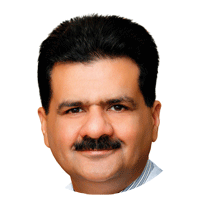Dubai: A 13-year-old girl with two sets of reproductive organs underwent “rarest of rare” surgeries at a Dubai hospital to separate her organs and relieve her of excruciating pain, doctors said on Sunday.
Medical investigations carried out on Mahra (name changed), the young UAE resident, an expatriate from Comoros Islands found that she had two uterus, two vaginas and two cervixes.
The patient has been discharged and recovered well.
Explaining the anomaly, Dr Rahman explained: “In a normal female, the uterus starts out as two small tubes, as you know a female is born with two set of ovaries. However, as the pregnancy progresses and the foetus develops, the tubes normally fuse to create one larger, hollow organ — the uterus. Sometimes, however, the tubes don’t fuse completely. Instead, each one develops into a separate structure. A double uterus may have one opening (cervix) into one vagina, or each uterine cavity may have a cervix. In this, case which is extremely rare, the patient had two vaginas, two cervixes and two uteruses.”
CAT scans and ultrasounds clearly revealed the patient’s predicament to Dr Rahman. The surgical team kept both sets of her reproductive organs intact and in a minimal invasive procure, kept her virginity intact and unblocked the other uterus, making it a normal functioning organ and relieved her of pain. Dr Rahman explained: “One side of her thin cervix was blocked. Usually to correct such a vaginal abnormality, the hymen of the patient which is symbolic of virginity has to be compromised (which is usually not acceptable to most parents anywhere in the world). But our multidisciplinary team successfully operated on the patient without rupturing the hymen, using tiny telescopic laparoscopic instruments that went through the hymen without rupturing it and corrected the anomaly”.
Dr Rahman added: “This type of surgery has never before been reported in the world and will be valuable for a lot of young girls with such an anomaly where they can preserve the hymen which is of importance in this part of the world. The patient has two fully functioning uteruses, vaginas and cervixes. Only care will have to be taken when she grows up and conceives. She will have to undergo caesarean section, especially in case where she might conceive simultaneously in both uteruses.”
Dr Kishen Pakkal, CEO of the hospital said: “Many uterine and vaginal anomalies including complete absence of vagina can be rectified today in Dubai which a few years back had to be performed outside the UAE. All these surgeries are done by keyhole approach which of course has advantages such as smaller incisions, lesser blood loss, and faster recovery."














